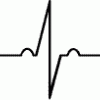I have found following information a while ago. It seems that Naltrexone is a negative modulator of GABAA receptors. I also saw that on wikipedia. Will low-dose-naltrexone help the upregulation of GABAA receptors after benzodiazepine usage?
Abstract
Several lines of behavioral and neurochemical evidence indicate GABA(A)-antagonistic properties of naloxone. Here, the effects of naloxone on rat brain GABA(A)/benzodiazepine receptor function in vitro were investigated. Naloxone, naltrexone and morphine (10-1,000 microM) reduced GABA-induced (10 microM) 36Cl- uptake in corticohippocampal synaptoneurosomes. Furthermore, the concentration-response curve for GABA-induced 36Cl- uptake (GABA 3-100 microM) was shifted to the right both by naloxone and morphine (1,000 microM). Naloxone also reduced the 36Cl- uptake induced by GABA + diazepam (3 microM + 1 microM) but not that induced by amobarbital (500 microM). The naloxone-induced (1,000 microM) reduction of GABA-mediated (10 microM) 36Cl- uptake was reversed by amobarbital (10-1,000 microM) but not by flumazenil (10-1,000 microM) or morphine (0.1-1,000 microM). These results indicate that naloxone, naltrexone and morphine are weak negative modulators of GABA(A)/benzodiazepine receptor function. The naloxone effect most likely does not involve opiate receptors or the benzodiazepine site on GABA(A) receptor complexes.
(https://www.ncbi.nlm...pubmed/10821435)
... and
Abstract
Rats were made sensitive to the effects of the opioid antagonist naltrexone by treating them once weekly with cumulative doses of the drug (1, 3, 10, 30 and 100 mg/kg). Sensitization was monitored by measuring salivation following naltrexone administration. During the first week of treatment, no salivation was noted following any dose of naltrexone. Over a period of 8 weeks, however, increasing amounts of salivation were noted, with the most salivation occurring at the higher doses. Animals treated for 8 weeks with saline never salivated following injections. Following the development of sensitivity to naltrexone, the rats were sacrificed and their brains were assayed for GABA receptor function. GABA-stimulated chloride uptake, a measure of GABA receptor function, was unchanged in the cortex, but was increased in the cerebellum. These results suggest that the effects of naltrexone on cerebellar GABA receptors may be involved in the development of enhanced sensitivity to opioid antagonists.
(https://www.ncbi.nlm.../pubmed/1310130)


















































